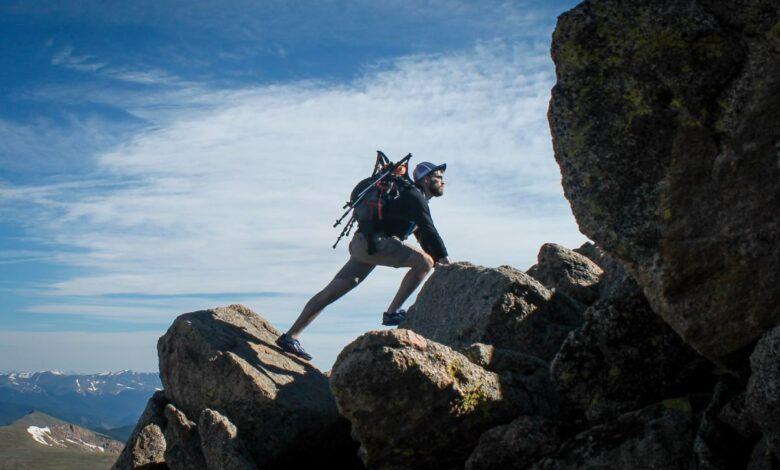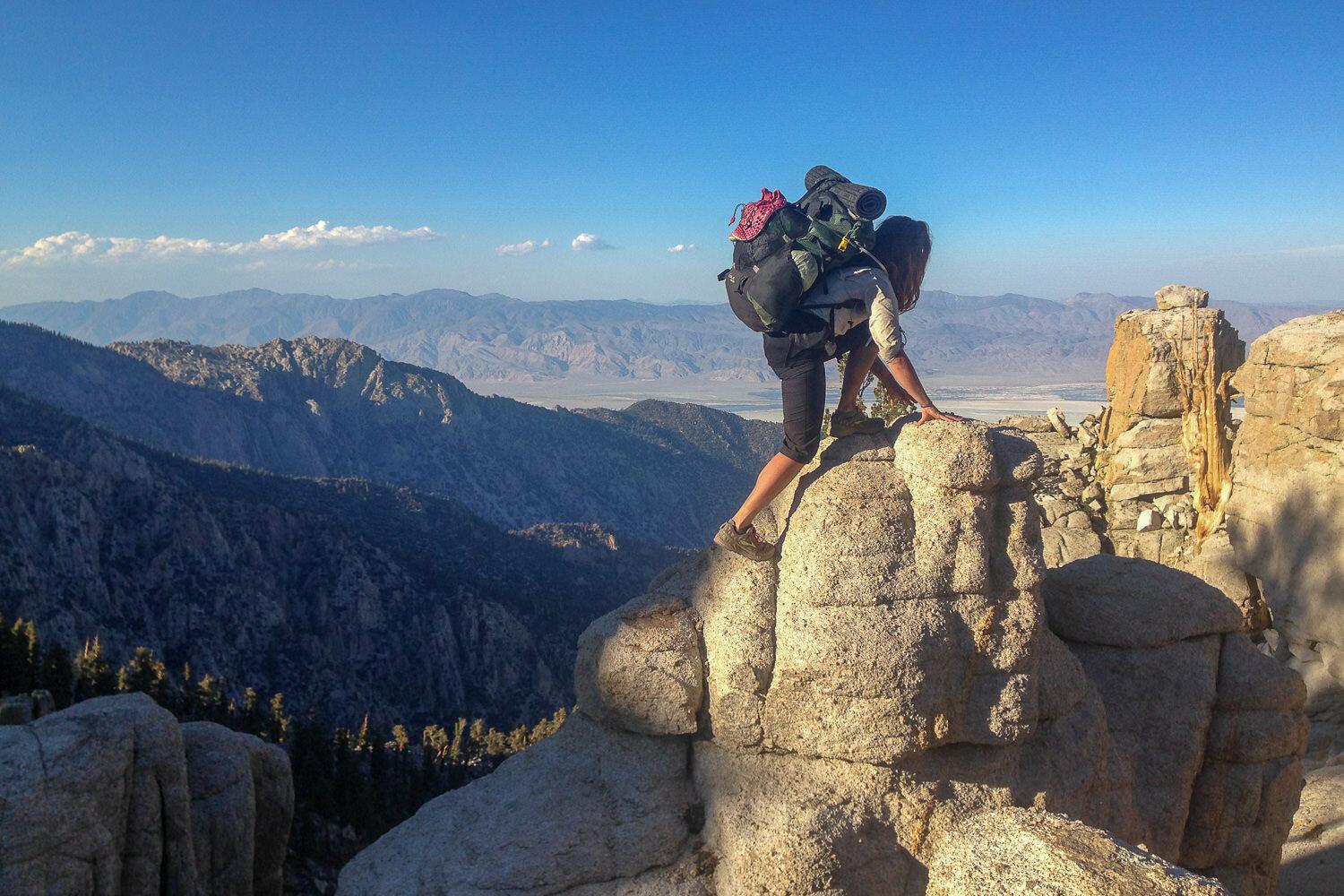
Amazing Health Benefits of Hiking and Mountain Climbing – Spending time outdoors in nature has been shown to provide a wide range of health benefits. Hiking and mountain climbing are two excellent ways to reap these benefits while also getting a good workout. Whether it’s a leisurely stroll through the woods or a strenuous climb up a mountain peak, there are plenty of reasons why hitting the trails is good for your physical and mental health.Amazing Health Benefits of Hiking and Mountain Climbing
In this article, we’ll explore the top health benefits of hiking and mountain climbing, the best features and locations for each activity, and provide tips on how you can get started. By the end, you’ll have a good understanding of how hiking and climbing can improve your overall wellbeing.
👉 Relocate to Canada Today!
Live, Study and Work in Canada. No Payment is Required! Hurry Now click here to Apply >> Immigrate to CanadaHere are the Health Benefits

Cardiovascular Health
Hiking and climbing both provide an excellent cardiovascular workout, strengthening your heart and lungs. The varied terrain encountered while hiking – going up and down hills, stepping over rocks and roots – works a wide range of muscles and increases heart rate. Several studies have found that people who hike or climb mountains regularly have enhanced cardiovascular fitness compared to more sedentary individuals. Increased cardiovascular strength reduces your risk for heart disease, stroke, and other chronic illnesses.
Muscular Strength
The physical exertion required for hiking and climbing also helps build muscular strength, especially in your legs, hips, and core. Going uphill works your large muscle groups, while scrambling over boulders and climbing on steep slopes targets smaller stabilizing muscles. This full-body workout improves balance, coordination, and reaction times – abilities that tend to decline with age and inactivity. Weight-bearing exercise like hiking and climbing can also help prevent loss of bone mass as you get older. Health Benefits of Hiking and Mountain Climbing
Read Also: Top 15 Health Benefits of Eating Cherries
Improved Mental Health
Being out in nature has positive effects on mental health by reducing stress, anxiety, and feelings of depression. The sights, sounds, and smells of the outdoors combined with the satisfaction of hiking or climbing a mountain can boost your mood and leave you feeling more relaxed yet energized. Exercising outdoors exposes you to sunlight, which increases vitamin D levels that are important for cognitive function. Hiking and climbing also promote mindfulness and help take your focus off everyday worries. The sense of accomplishment upon summiting a peak enhances self-esteem too.NYSC Portal
Weight Control
The combination of cardiovascular exertion and muscular effort required for hiking and climbing burns a lot of calories. A 155-pound person can burn around 400 calories per hour of hiking. Faster paced hiking on steeper terrain and climbing burns even more. Including hiking and climbing along with a healthy diet supports weight loss goals and helps keep off extra pounds. The outdoor workouts also help regulate appetite hormones, so you feel less hungry after a vigorous hike or climb.
Social Connectedness
Sharing outdoor adventures with others provides opportunities for meaningful social connections. Hiking and climbing are activities that tend to foster great conversations, promote teamwork, and bond people over shared interests. Being part of hiking or climbing groups helps you make new friends and expands your social circles. You not only enjoy the health benefits together, but you also have built-in support for staying motivated and reaching fitness goals.Information guide Nigeria
Immune System Boost
Some research indicates that spending time outdoors may help boost immune system function. Hiking and climbing support better immune response in a few key ways. The exercise involved causes positive stress that increases circulation and activates the immune system. Also, outdoor recreation exposes you to more sunlight and fresh air with natural phytoncides released by plants and trees, all of which may help bolster immune defenses. This means enjoying the outdoors regularly may help you fight illness.
Read Also: 15 Best Stoning Machine in Nigeria
👉 Relocate to Canada Today!
Live, Study and Work in Canada. No Payment is Required! Hurry Now click here to Apply >> Immigrate to CanadaBest Hiking Features and Locations
For novice hikers looking to get started, choose trails with:
– Mostly flat or gently rolling terrain under 5 miles
– Good footing and cleared paths
– Access to water and restrooms
– Interesting scenery that may include forests, meadows, lakes, or rivers
Popular easy hiking locations in the United States include:
– Bryce Canyon National Park, Utah – Peekaboo Loop Trail
– Arches National Park, Utah – Park Avenue Trail
– Glacier National Park, Montana – Trail of the Cedars
– Grand Canyon National Park, Arizona – Rim Trail
– Rocky Mountain National Park, Colorado – Bear Lake Trail
– Acadia National Park, Maine – Ocean Path Trail
– Great Smoky Mountains, Tennessee – Laurel Falls Trail
– Shenandoah National Park, Virginia – Story of the Forest TrailRomantic love message
Read Also: Top 15 Best Foods to Boost Your Brain and Memory
As your fitness level improves, you can seek out more challenging trails that include:
– Steep inclines and high elevations
– Distance over 10 miles
– Rocky, uneven surfaces
– Water crossings
– Passage through remote backcountry
Top hiking destinations for experienced hikers include:
– Yosemite National Park, California – Half Dome or John Muir Trail
– Zion National Park, Utah – Observation Point Trail
– Colorado Rocky Mountain National Park, Colorado – Sky Pond Trail
– Mount Rainier National Park, Washington – Wonderland Trail
– North Cascades National Park, Washington – Cascade Pass and Sahale Arm Trail
– Denali National Park, Alaska – Mt. Healy Overlook Trail
– Grand Canyon National Park, Arizona – Bright Angel Trail to Plateau Point
– Great Smoky Mountains National Park, Tennessee – Mt. LeConte via Alum Cave Trail
– White Mountains, New Hampshire – Presidential TraverseGood morning My Love Message
Read Also: 15 Best Kid-Friendly Things to Do in Abuja
Best Mountain Climbing Features and Locations
For beginners looking to start climbing mountains, choose hiking trails that have:
– Steady inclines up mountains no taller than 5,000 ft.
– Well-defined routes and good footing
– Rocky scrambling sections that allow you to test climbing skills
– Amazing summit views as your reward
Great starter mountain climbs in the U.S. include:
– Mount Monadnock in New Hampshire – 3 mile trail to 3,165 ft summit
– Mount Si near Seattle, Washington – 4 mile trail with 2,400 ft elevation gain
– Mount Elbert in Colorado – tallest 14,000 ft peak in Rockies, non-technical
– Humphreys Peak in Arizona – summit Arizona’s highest point at 12,600 feet
– Clingmans Dome in Great Smoky Mountains National Park – short but steep 2.5 mile trail
– Mount Katahdin in Maine – strenuous 5 mile climb with 4,000 ft elevation gain
– Mount Tallac near Lake Tahoe, California – 9.5 mile out and back trail to 9,735 ft summit
Once your fitness and climbing skills progress, take on more advanced mountain climbs:
– 12,000+ feet elevation with exposed ledges, scrambling, and steep drop-offs
– Requires technical climbing gear – ropes, harnesses, helmets
– Can be multi-day climbs requiring basecamp and challenging weather
Epic advanced mountain climbs in the United States include:
– Grand Teton in Wyoming – 13,770 ft, exposed climbing to summit
– Mount Rainier in Washington – 14,410 ft, requires ice axe and crampons
– Mount Whitney in California – 14,494 ft, 11+ mile climb on rough terrain
– Denali in Alaska – 20,310 ft, North America’s highest peak
– Mount Saint Elias on the Alaska-Yukon border – 18,008 ft, remote and technically demanding
– Liberty Ridge on Mount Rainier – extremely steep snow and ice climb to 14,410 ft summit
– The Diamond on Longs Peak in Colorado – sheer 1,000 ft granite rock wall
– Devils Tower in Wyoming – world-famous sheer rock columns for rock climbingJAMB portal
How to Get Started with Hiking and Climbing
If you’re new to hiking and mountain climbing, follow these tips to get started safely while maximizing your enjoyment:
– Take an introductory mountain climbing course at an outdoor school to learn essential skills like knot tying, belaying, and using climbing gear properly.
– Start hiking on well-marked trails that suit your current fitness level and work your way up.
– Get proper hiking and climbing footwear with grip and ankle support to prevent injury on uneven terrain.
– Pack essential supplies – first aid kit, extra layers, emergency blanket, water, trail mix, map, sun protection.
– Join a hiking or climbing club to find partners, take lessons, and gain mentorship. Connect with the outdoor community.
– Consider hiring a guide when attempting a challenging new mountain to climb safely.
– Know your physical limits and don’t overexert beyond your abilities; turn back if conditions become dangerous.
– Check weather forecast and trail conditions before every hike.
– Share your hike plan with someone before you go and keep emergency contacts programmed in your phone.
– Respect nature and practice Leave No Trace principles when enjoying the outdoors.
Starting hiking and climbing the right way ensures you’ll get in shape, prevent injury, meet great people, and experience the thrill of summiting mountain peaks for years to come. The sense of accomplishment you’ll gain will be incredibly rewarding. Health Benefits of Hiking and Mountain Climbing
Read Also: Top 15 Performance-Based Acting Programs in Nigeria
Conclusion
In summary, Hiking and mountain climbing offer so many benefits for both physical and mental health. The cardiovascular exercise strengthens your heart and lungs while the muscle exertion shapes your legs, core, arms, and back. Spending time outdoors also boosts immunity and cognitive function while reducing stress and anxiety. Hiking and climbing help with weight control and burns calories as an effective fat blaster workout too. Beyond the fitness perks, the social connections and sense of satisfaction you’ll gain from challenging yourself in nature create a huge boost in overall wellbeing. Whether you’re a novice or expert outdoor enthusiast, make hiking and mountain climbing a healthy habit that keeps you active.
Check JAMB Result
Check and Confirm: How much is Dollar to Naira







